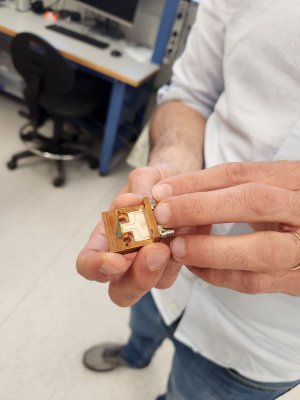Researchers use heat to drive topological spin texture transformations
Researchers at Japan's RIKEN have conducted an experiment that could help the development of new energy-efficient spintronics devices. They used heat and magnetic fields to create transformations between spin textures—magnetic vortices and antivortices known as skyrmions and antiskyrmions—in a single crystal thin plate device. What's even more important is that they achieved this at room temperature.
Skyrmions and antiskyrmions, which are textures that exist within special magnetic materials involving the spin of the electrons in the material, are an active area of research, as they could be used for next-generation memory devices, for example, with skyrmions acting as a "1" bit and antiskyrmions a "0" bit. In the past, scientists have been able to move them in a variety of ways, and to create transformations between them using electric current. However, because current electronic devices consume electrical power and produce waste heat, the researchers in the group, led by Xiuzhen Yu at the RIKEN Center for Emergent Matter Science, decided to see if they could find a way to create the transformations using heat gradients.
